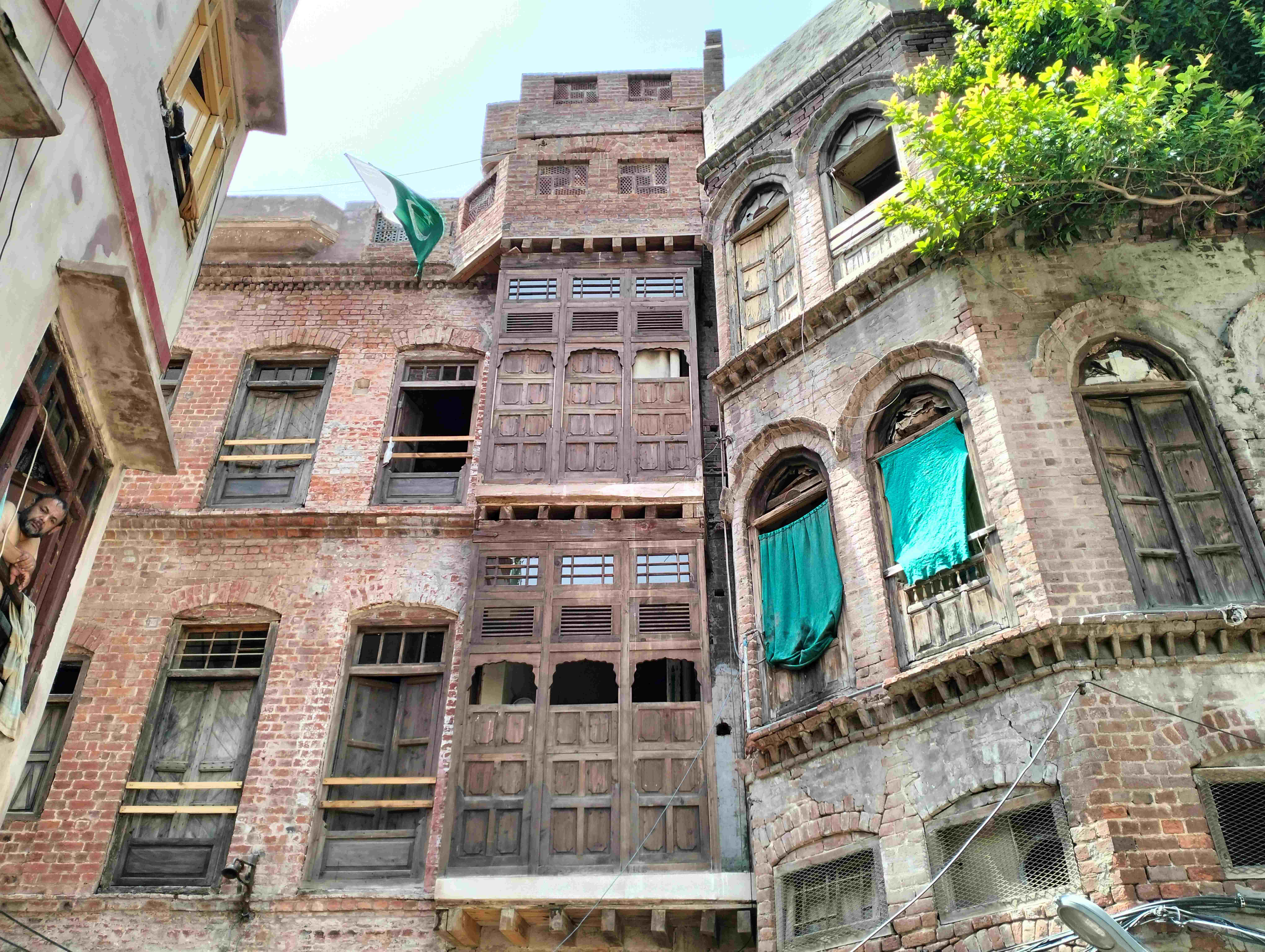Wandering through the narrow, winding lanes of Old Lahore is like stepping back in time. Each street tells its own story, and each brick whispers tales of a bygone era. Among these hidden treasures lies Koocha Husain Shah, a captivating street nestled just behind the majestic Wazir Khan Mosque. Once forgotten and neglected, this historic lane is now being lovingly restored, bringing back its lost charm and revealing its rich past to a new generation of explorers.

The Walled City of Lahore is a living museum, showcasing the city’s vibrant history and cultural heritage. Its heart is the Wazir Khan Mosque, a stunning example of Mughal architecture from the 17th century, renowned for its intricate tile work, beautiful frescoes, and serene courtyards. The mosque is not just a place of worship but a beacon of Lahore’s artistic and spiritual heritage, drawing visitors from all over the world to marvel at its splendour. Within this historic quarter, every alley and street has a story, and Koocha Husain Shah is no exception.
Koocha Husain Shah is not only steeped in history but also adorned with unique architectural features that tell stories of a rich past. The street is named after the legendary sage Hussain Shah, revered for his miraculous healing powers. But it is the architectural charm that truly brings this koocha to life. The houses here boast beautiful jharokas (overhanging enclosed balconies), traditional wooden balconies, arched windows, and intricate facades that are a testament to the old-style construction techniques of Lahore.
The brickwork in Koocha Husain Shah, as seen in the image, reflects the quintessential blend of Mughal, Sikh, and British influences that characterise the architecture of Old Lahore. The multi-storey houses stand tall with their red brick exteriors, intricately designed wooden doors, and windows that have withstood the test of time. The arched windows and doorways are beautifully crafted, showcasing a fusion of Mughal grandeur and colonial-era practicality. Some of the windows are partially covered with green fabric, a practical yet charming solution to shield the interiors from the sun while maintaining a quaint aesthetic.
These structures, with their ornate wooden carvings and sturdy brickwork, embody the spirit of Lahore’s architectural legacy. The mix of textures and materials, from the aged wood of the balconies to the resilient brick facades, creates a visually striking landscape that is uniquely Lahori. The balconies are especially notable, not just for their aesthetic appeal but for their role in the social fabric of the community. These were spaces where women could observe street life from a discreet distance, maintaining the privacy that was so integral to the cultural norms of the time.
Despite its storied past and architectural beauty, Koocha Husain Shah did not escape the ravages of time. As the years went by, neglect and unsympathetic alterations by locals led to the deterioration of its beautiful old buildings. Much of the area’s original charm faded away, and the street became a shadow of its former self. Like many parts of the Walled City of Lahore, it fell into disrepair, its historical significance slowly fading from memory. However, during the conservation efforts at Wazir Khan Mosque, the Walled City of Lahore Authority recognised the potential of Koocha Husain Shah and decided to embark on a journey to restore it to its former glory.
The ambitious restoration project for Koocha Husain Shah began in November 2021, aiming to breathe new life into this forgotten part of Old Lahore. With an investment of Rs. 90 million, the restoration is set to be completed by 2024, focusing on reviving the historical significance of the area and enhancing its appeal as part of Lahore’s heritage circuit. The project involves the rehabilitation of 31 buildings, including 13 of historical importance, and 400 meters of street infrastructure, ensuring that the architectural splendour and cultural heritage of Koocha Husain Shah are preserved for future generations.
The restoration process is comprehensive, addressing structural issues in significant buildings and upgrading essential infrastructure, such as sewerage systems, storm and rainwater pipes, and gas lines. Electrical wiring is being modernised and taken underground to preserve the area’s aesthetic appeal, and firefighting arrangements are being implemented to ensure safety. Street surfaces are being improved for better accessibility and aesthetics, while enhanced street lighting and tourist signage are being installed to guide visitors and create a welcoming atmosphere.
With the restoration well underway, Koocha Husain Shah is set to become an integral part of a new Heritage Enclave, which includes the Masjid Wazir Khan, the tomb of Imam Gammo, and this historic street. The Walled City of Lahore Authority is developing a tourist circuit to link these sites with communal areas, ensuring that Koocha Husain Shah is once again celebrated for its cultural and historical significance.
As Koocha Husain Shah is brought back to life, it offers visitors a chance to rediscover a hidden gem in the heart of Old Lahore. The street’s revival is more than just a restoration project; it is a celebration of Lahore’s rich heritage and a testament to the enduring spirit of this ancient city. As you walk through its restored streets, you can almost hear the echoes of its past, feel the presence of its legendary figures, and witness the rebirth of a once-forgotten treasure.
Writer : Tania Qureshi (Historian, Writer, Heritage Analyst)
The writer can be reached on twitter.com/TaniaQureshi
